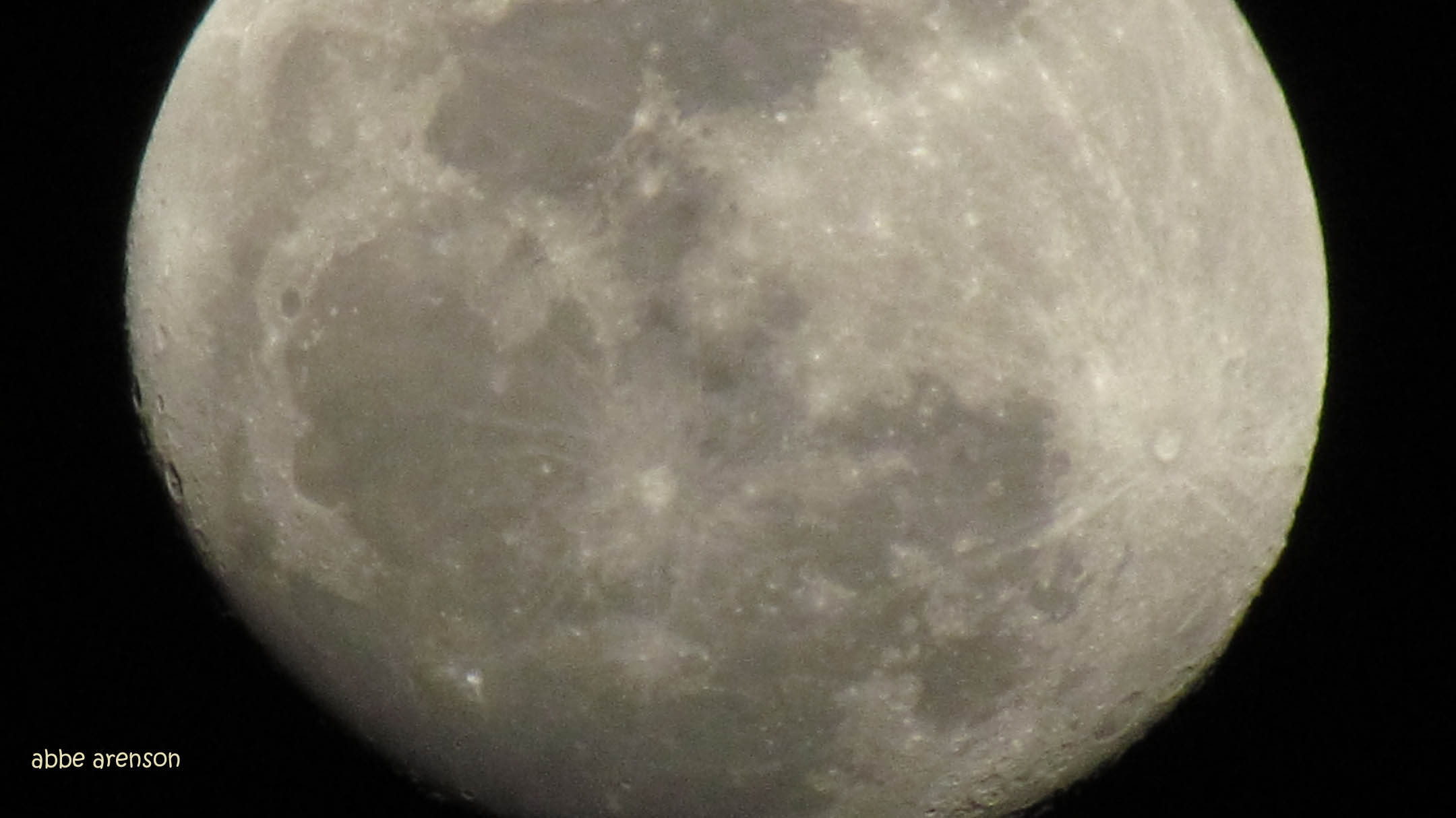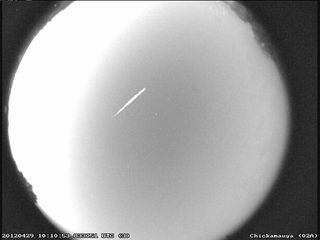'Supermoon' Tonight! Tips to See Year's Biggest Full Moon, Meteor Shower

UPDATE: For the latest on Saturday's "supermoon" and meteor shower, read our latest story here: Spectacular 'Supermoon' Wows Skywatchers Around the World
If the full moon looks a bit bigger and brighter in tonight's sky, you're not seeing things: It's just the "supermoon" — the biggest moon of 2012. And there's a meteor shower from Halley's comet peaking tonight, too, adding to the sky show.
The full moon of May will hit its peak overnight tonight and early Sunday (May 5 and 6) just one minute after the moon makes its closest approach to Earth. The timing means the moon, weather permitting, could appear up to 14 percent bigger and 30 percent brighter than the average full moon, an event scientists have nicknamed the "supermoon."
The moon will be at its fullest at 11:35 p.m. EDT (0335 Sunday GMT) just after hitting perigee, the point in its orbit that brings the moon closest to Earth. The technical name for the event is a "perigee moon," though NASA and other scientists have dubbed May's full moon as the supermoon of 2012.
The moon will be about 221,802 miles (356,955 kilometers) from Earth, about 12.2 percent closer to our planet than when the moon is at apogee, its farthest point. The average Earth-moon distance is about 230,000 miles (384,400 km).
The last time a supermoon occurred was in March 2011. That supermoon was actually closer to Earth than the moon will be tonight by about 248 miles (400 km). [Amazing Supermoon Photos from 2011]
Big moon rising
Get the Space.com Newsletter
Breaking space news, the latest updates on rocket launches, skywatching events and more!
A good time to watch is during moonrise or moonset. At these times, due to reasons astronomers don't fully understand, the moon can appear much larger than when it is higher in the sky. But the view is actually an optical illusion (also known as the "moon illusion").
The moon is no larger than it is when it's overhead in the night sky and you can prove it yourself. Here's how, when the moon is low on the horizon measure its size with a ruler or your thumb and forefinger. When it's higher up in the sky, try again. The distances will be the same.
The extra big full moon of May can mean higher tides on Earth, an effect called "perigean tides," but there is no chance of the supermoon posing a threat to Earth.
"In most places, lunar gravity at perigee pulls tide waters only a few centimeters (an inch or so) higher than usual," astronomer Tony Phillips wrote in a NASA supermoon alert. "Local geography can amplify the effect to about 15 centimeters (6 inches) — not exactly a great flood."
Meteors from Halley's comet
The supermoon is not the only celestial sight gracing the evening skies this weekend. Tonight, the annual Eta Aquarid meteor shower will hit its peak, promising up to 60 meteors per hour for skywatchers with optimum viewing conditions (clear weather and away from city lights).
The Eta Aquarid meteor shower is one of two "shooting star" displays created by dust left over by the famed Halley's comet as it makes its 76-year trip around the sun. The Orionid meteor shower in October is the other meteor show from the comet.
While the supermoon is expected to outshine the fainter Eta Aquarid meteors, NASA meteor expert Bill Cooke predicts that some bright fireballs may be visible. Cooke and his observing team at NASA's Marshall Space Flight Center have already recorded several bright fireballs from the Eta Aquarids and are looking forward to seeing more tonight using the agency's network of all-sky meteor cameras.

"Ideal viewing conditions are clear skies away from city lights, especially just before dawn," NASA officials wrote in an Eta Aquarid meteor observing guide. " Find an area well away from city or street lights. Lie flat on your back on a blanket, lawn chair or sleeping bag and look up, taking in as much of the sky as possible. After about 30 minutes in the dark, your eyes will adapt and you will begin to see meteors. Be patient — the show will last until dawn, so you have plenty of time to catch a glimpse."
Views from NASA's all-sky cameras are available to view the Eta Aquarid meteor shower remotely here: http://www.nasa.gov/connect/chat/allsky.html
If you snap an amazing photo of the supermoon of May or Eta Aquarid meteor shower and would like to share it with SPACE.com for a story or gallery, send photos and comments to managing editor Tariq Malik at: tmalik@space.com.
You can follow SPACE.com Managing Editor Tariq Malik on Twitter @tariqjmalik. Follow SPACE.com for the latest in space science and exploration news on Twitter @Spacedotcom and on Facebook.
Join our Space Forums to keep talking space on the latest missions, night sky and more! And if you have a news tip, correction or comment, let us know at: community@space.com.

Tariq is the Editor-in-Chief of Space.com and joined the team in 2001, first as an intern and staff writer, and later as an editor. He covers human spaceflight, exploration and space science, as well as skywatching and entertainment. He became Space.com's Managing Editor in 2009 and Editor-in-Chief in 2019. Before joining Space.com, Tariq was a staff reporter for The Los Angeles Times covering education and city beats in La Habra, Fullerton and Huntington Beach. In October 2022, Tariq received the Harry Kolcum Award for excellence in space reporting from the National Space Club Florida Committee. He is also an Eagle Scout (yes, he has the Space Exploration merit badge) and went to Space Camp four times as a kid and a fifth time as an adult. He has journalism degrees from the University of Southern California and New York University. You can find Tariq at Space.com and as the co-host to the This Week In Space podcast with space historian Rod Pyle on the TWiT network. To see his latest project, you can follow Tariq on Twitter @tariqjmalik.











